-
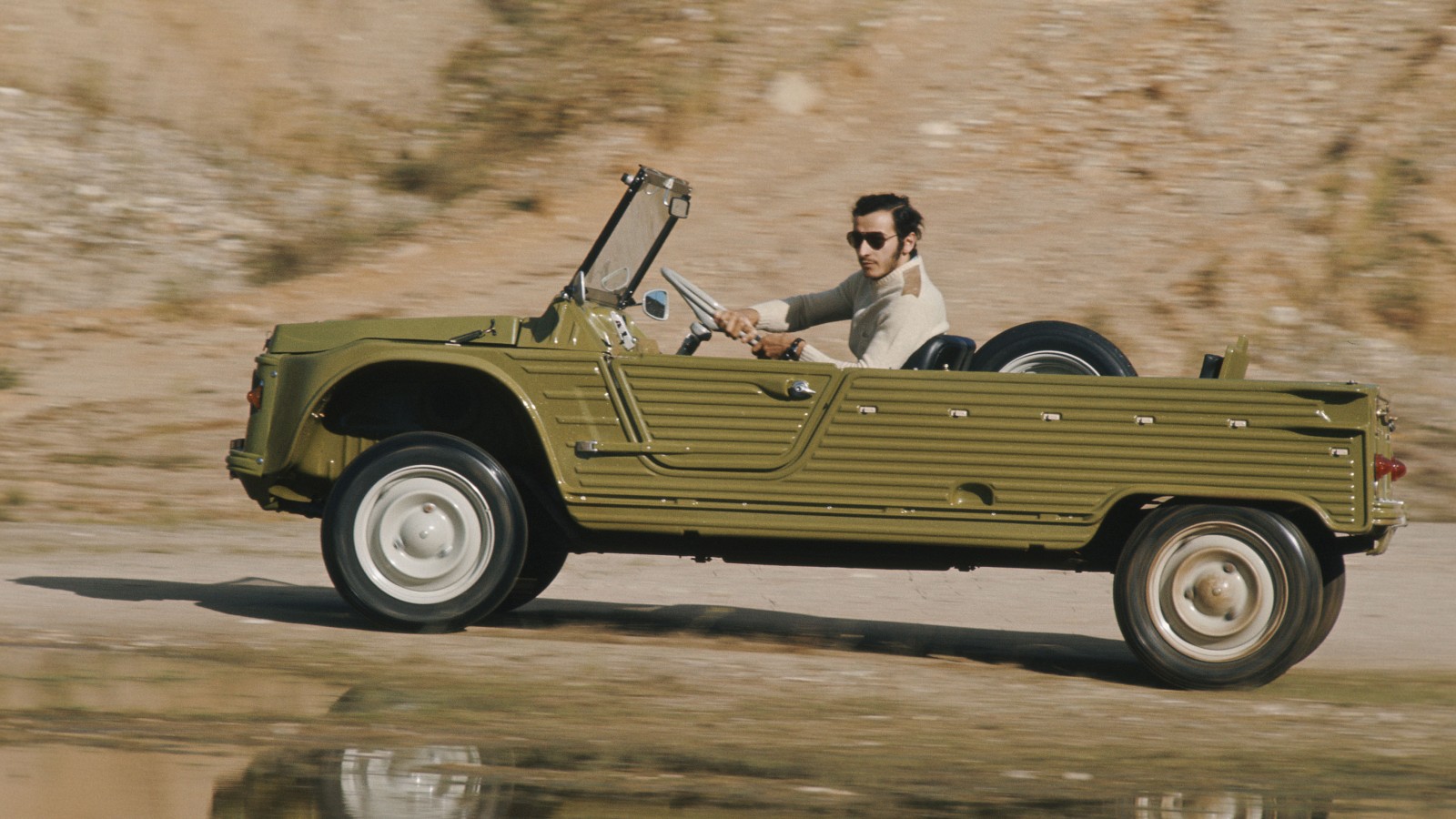 © Citroën
© Citroën -
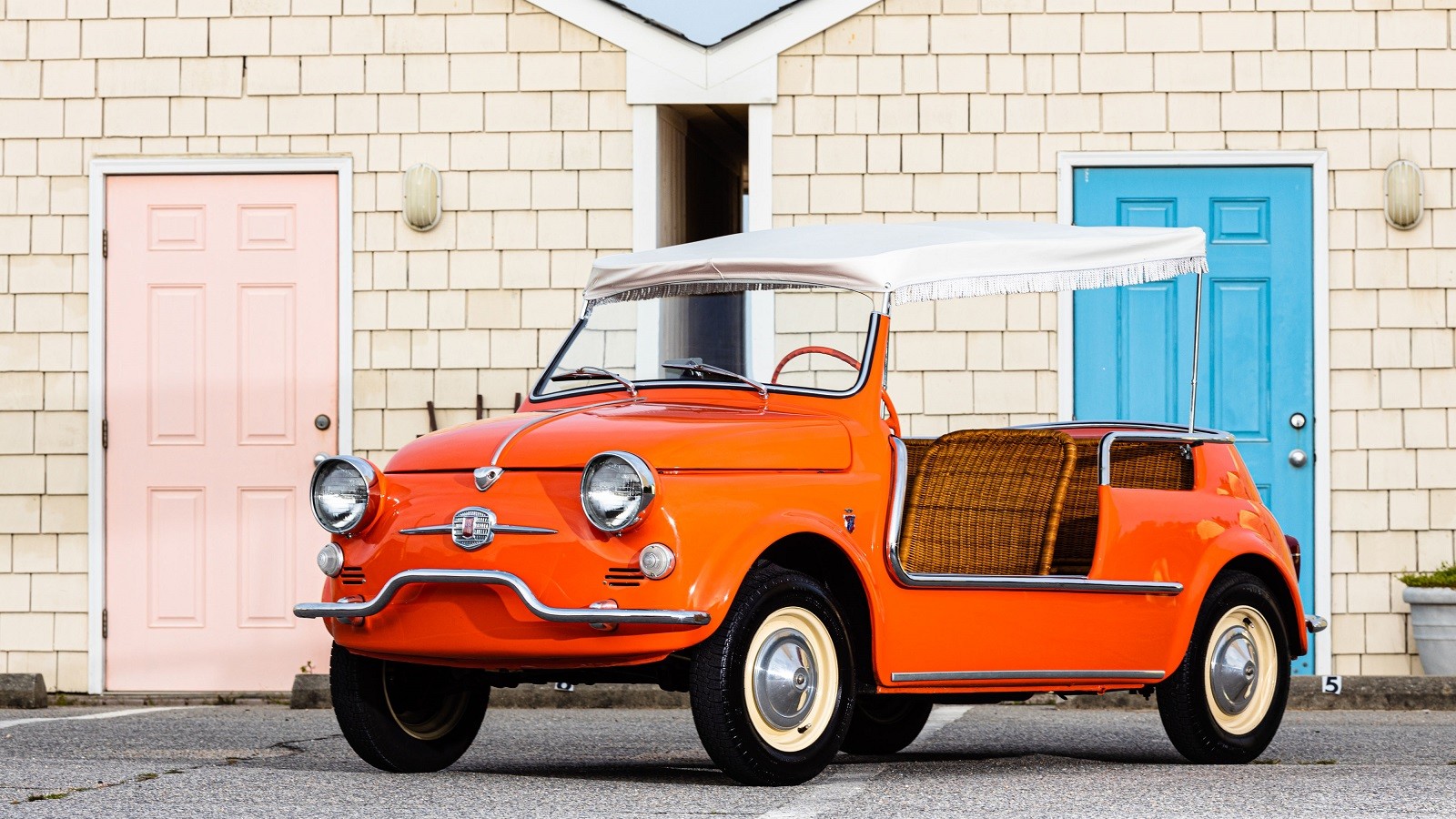 © RM Sotheby’s
© RM Sotheby’s -
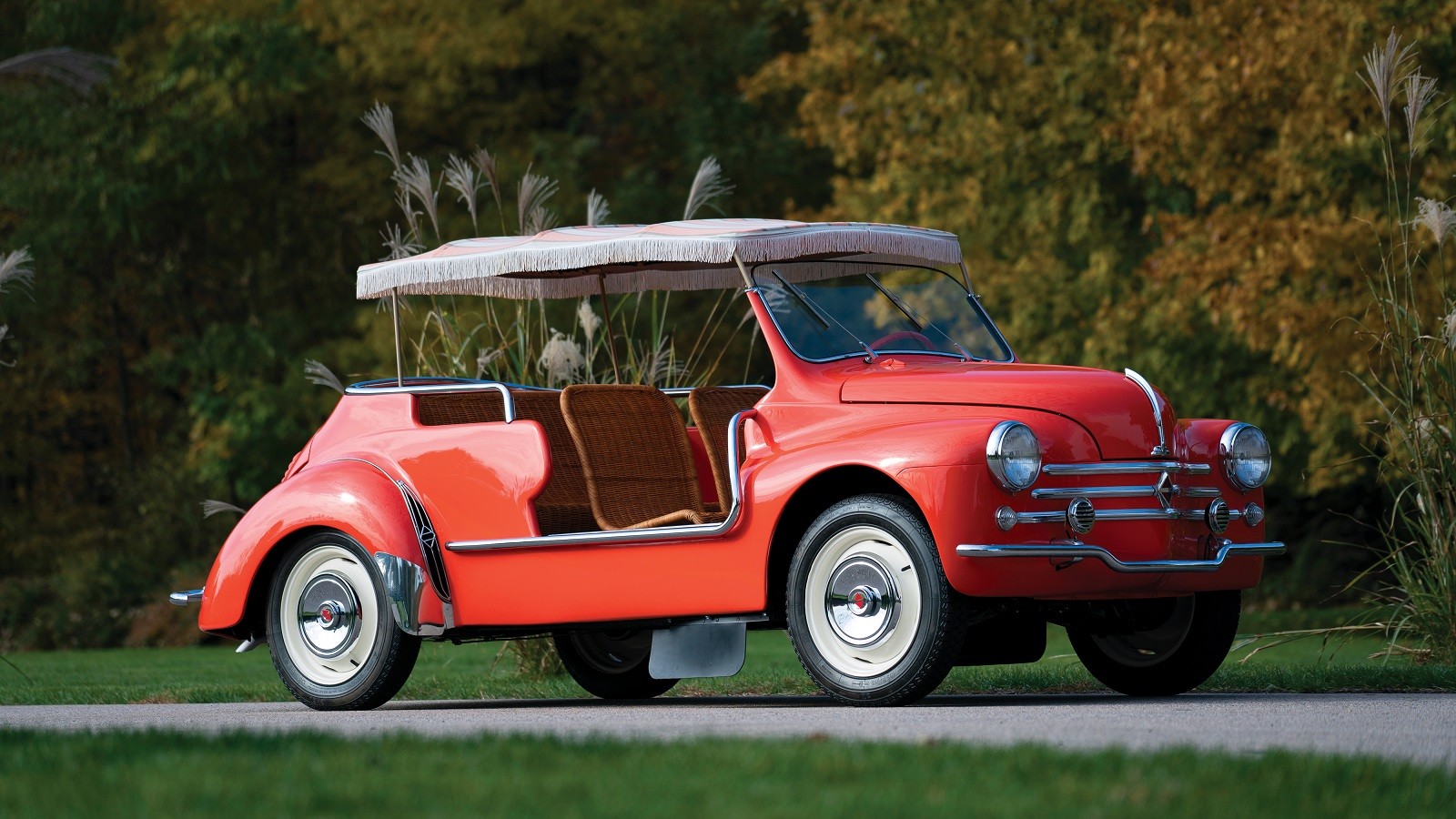 © Erik Fuller/RM Sotheby’s
© Erik Fuller/RM Sotheby’s -
 © Erik Fuller/RM Sotheby’s
© Erik Fuller/RM Sotheby’s -
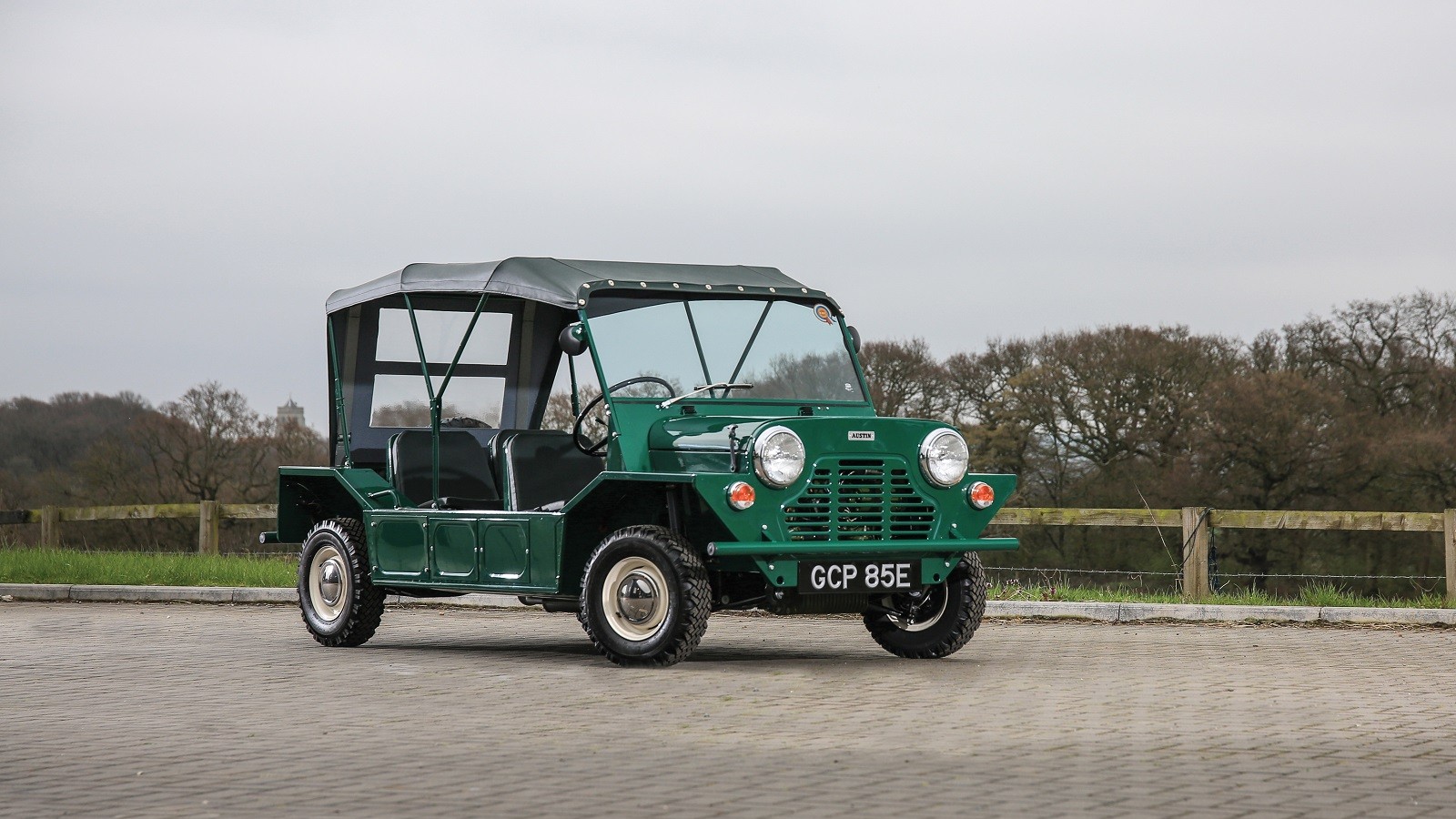 © RM Sotheby’s
© RM Sotheby’s -
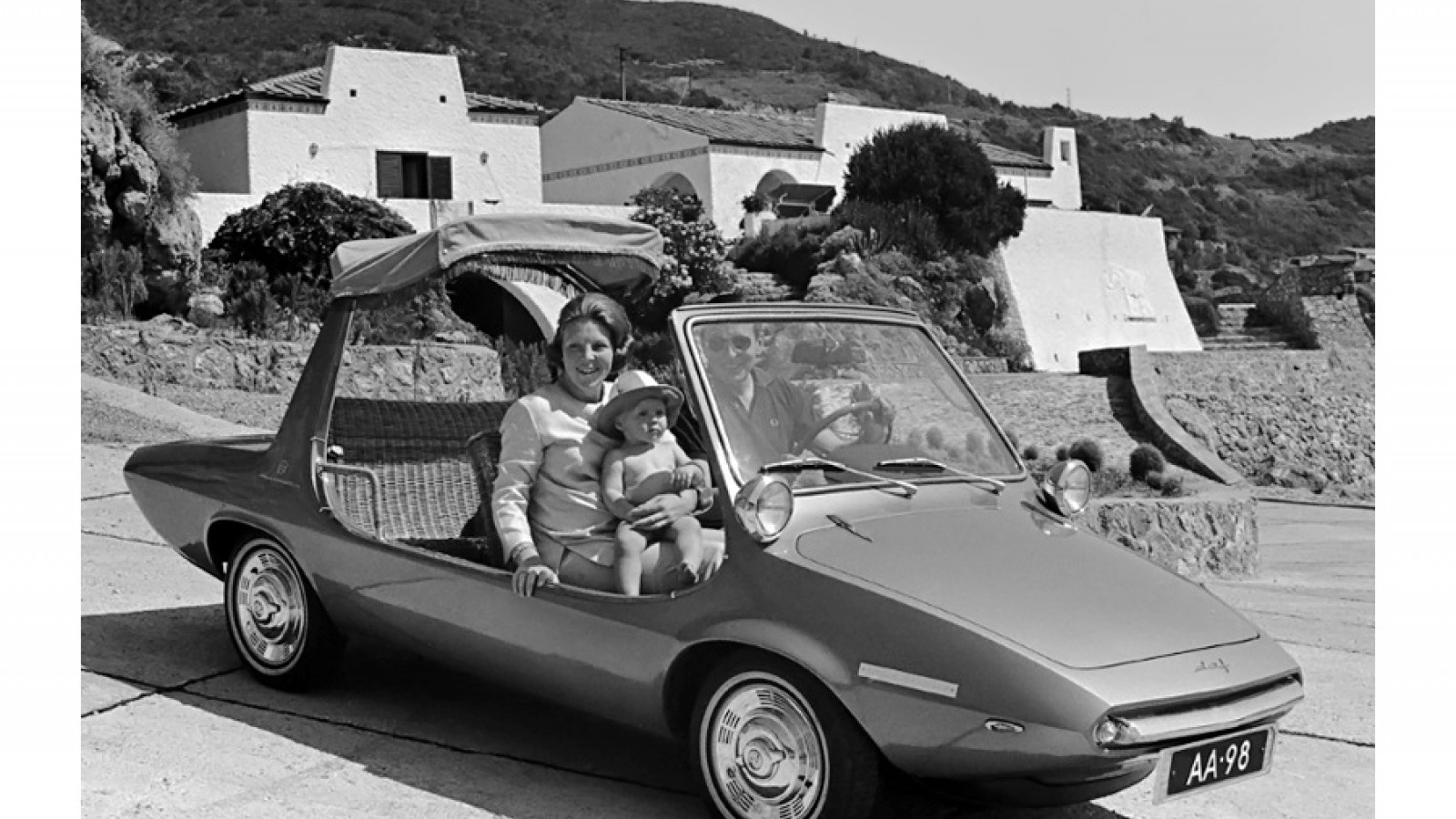 © DAF
© DAF -
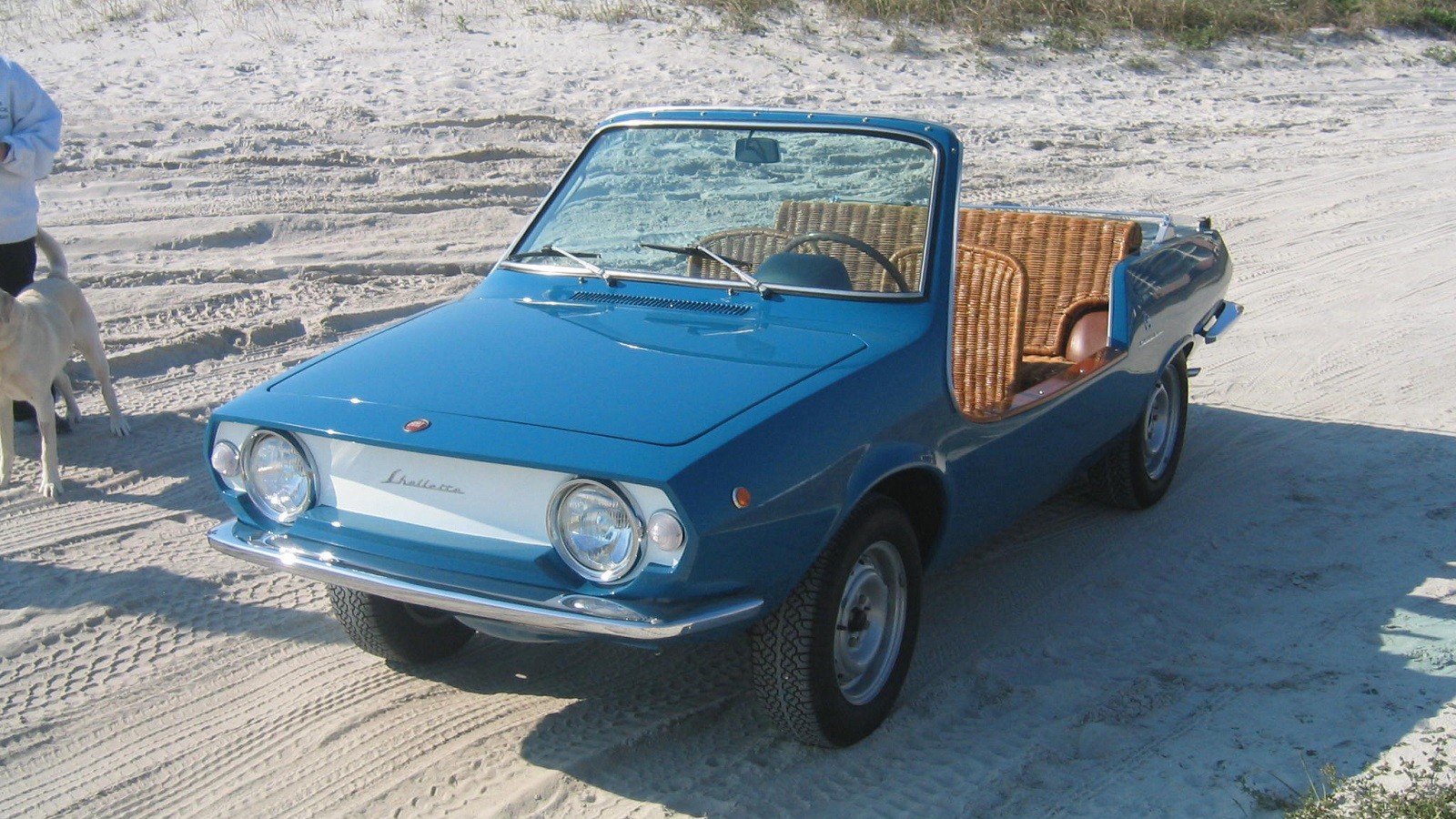 © RM Sotheby’s
© RM Sotheby’s -
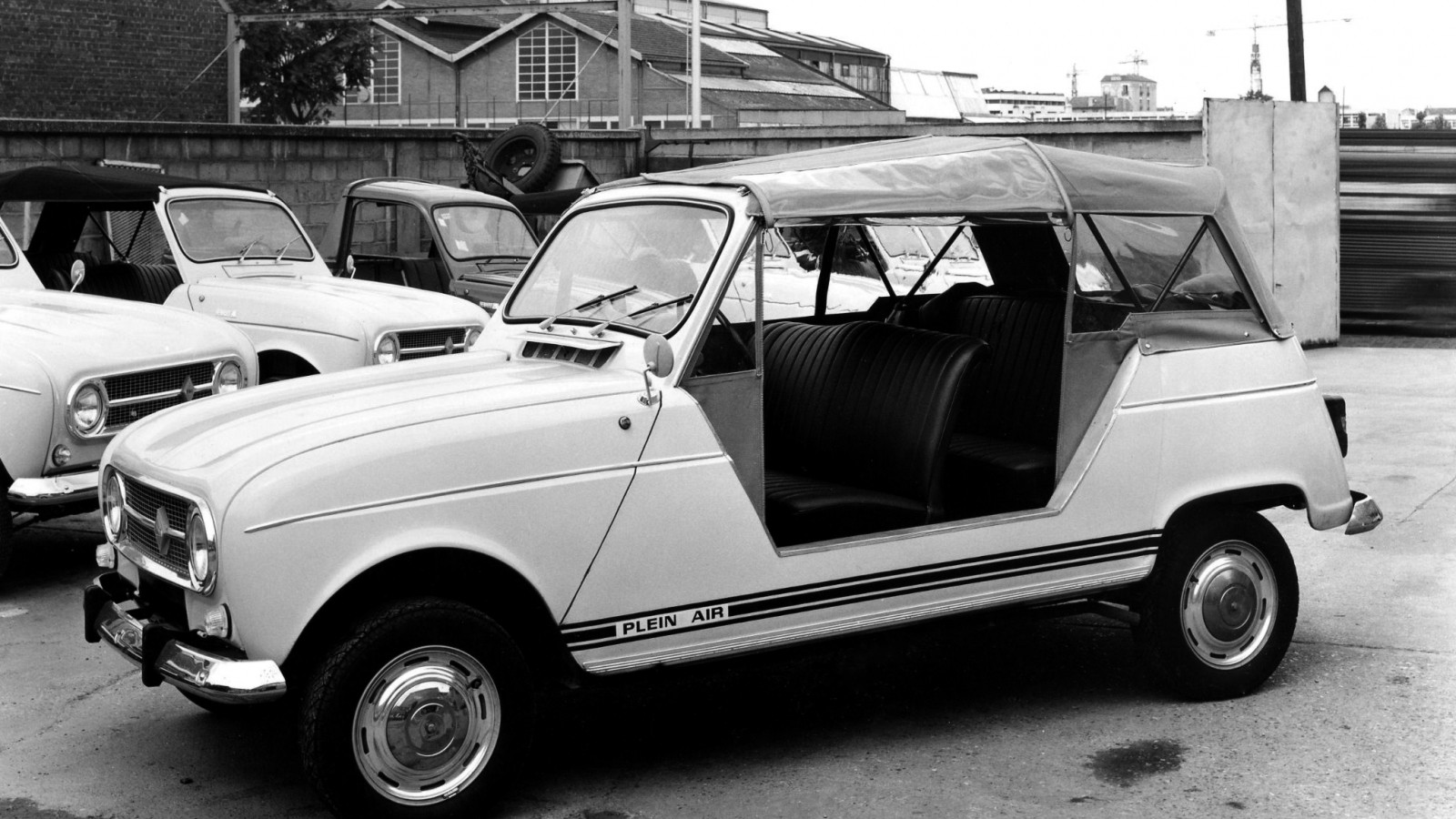 © Renault
© Renault -
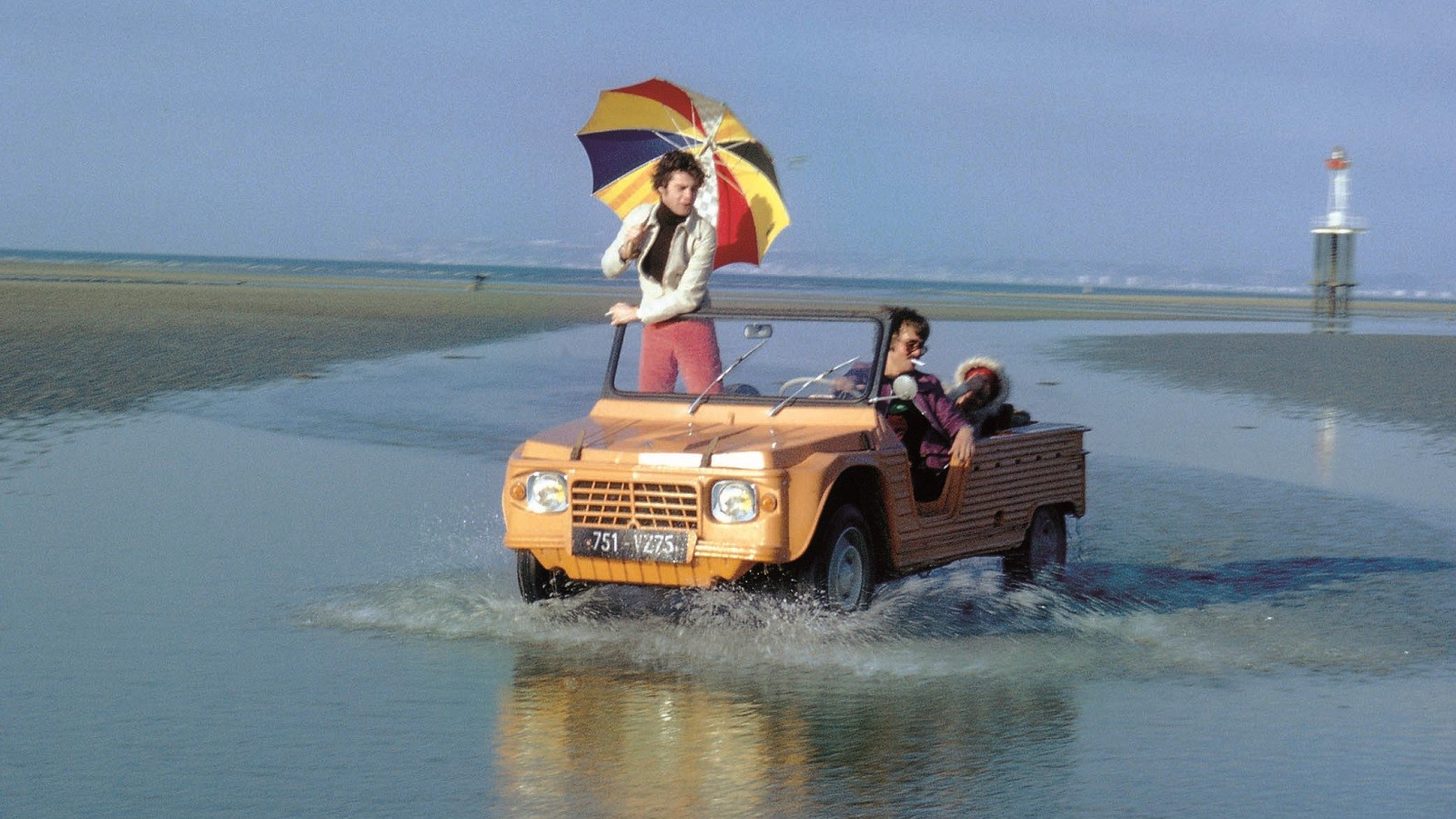 © Citroën
© Citroën -
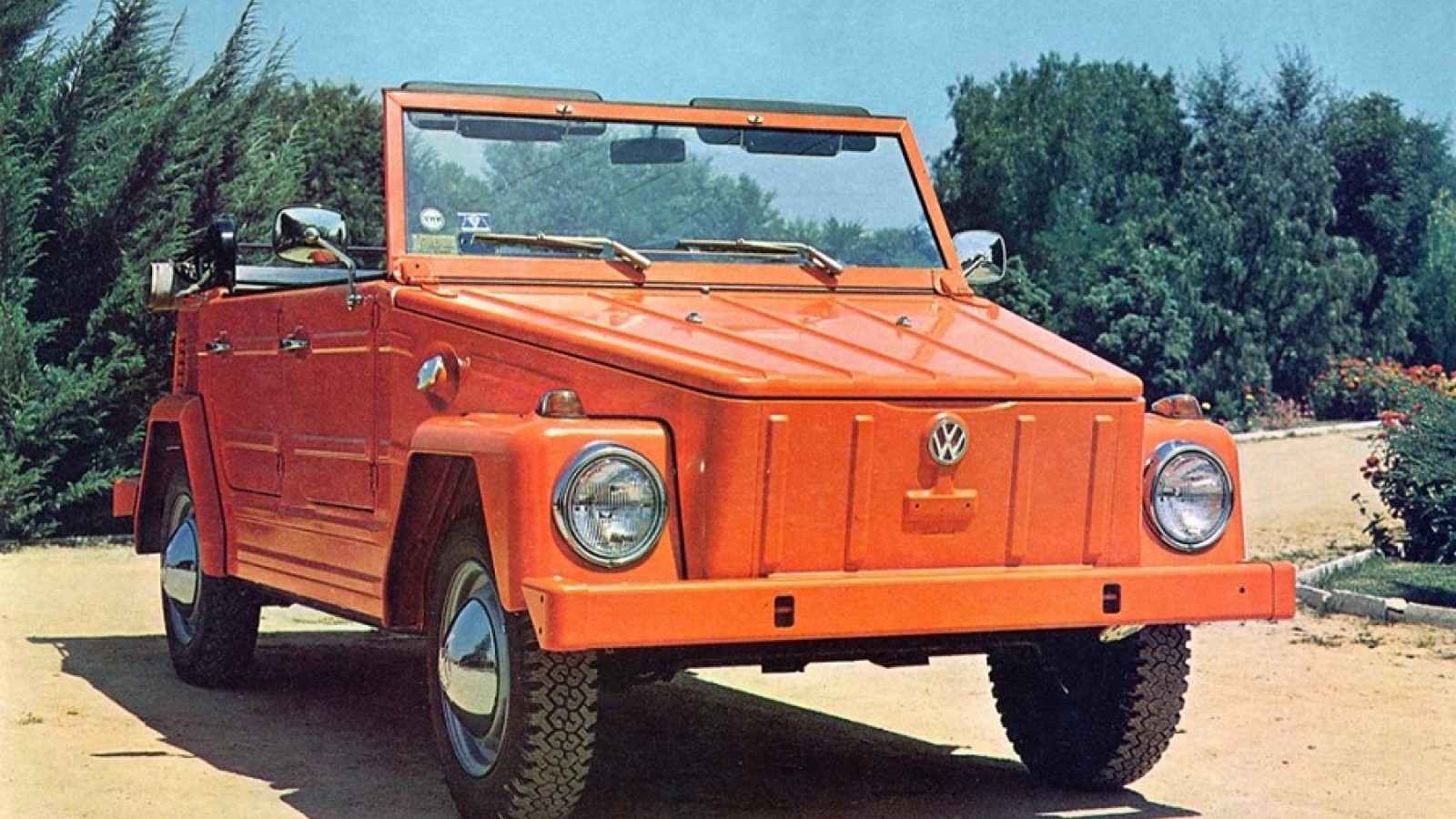 © Volkswagen
© Volkswagen -
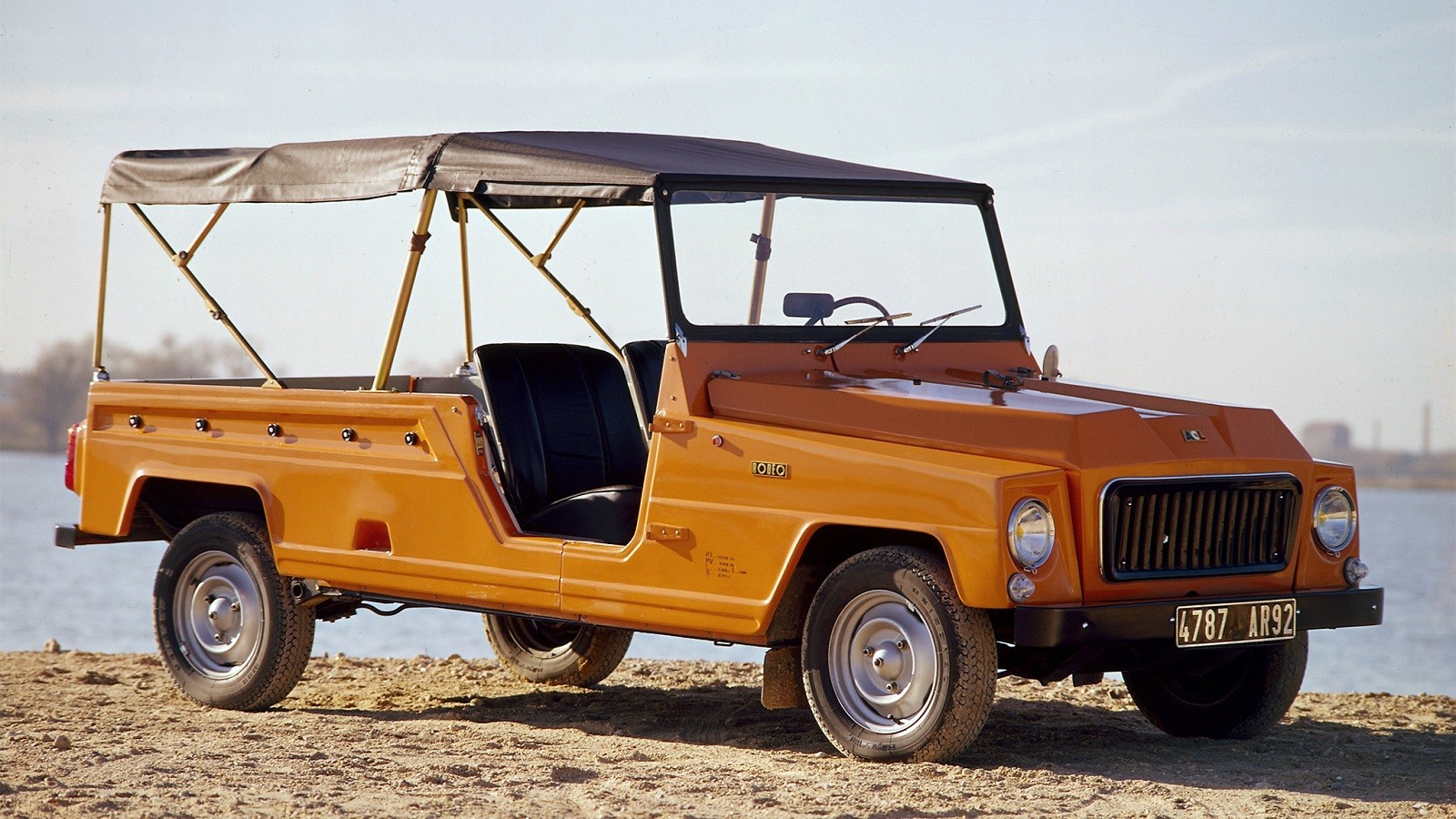 © Renault
© Renault -
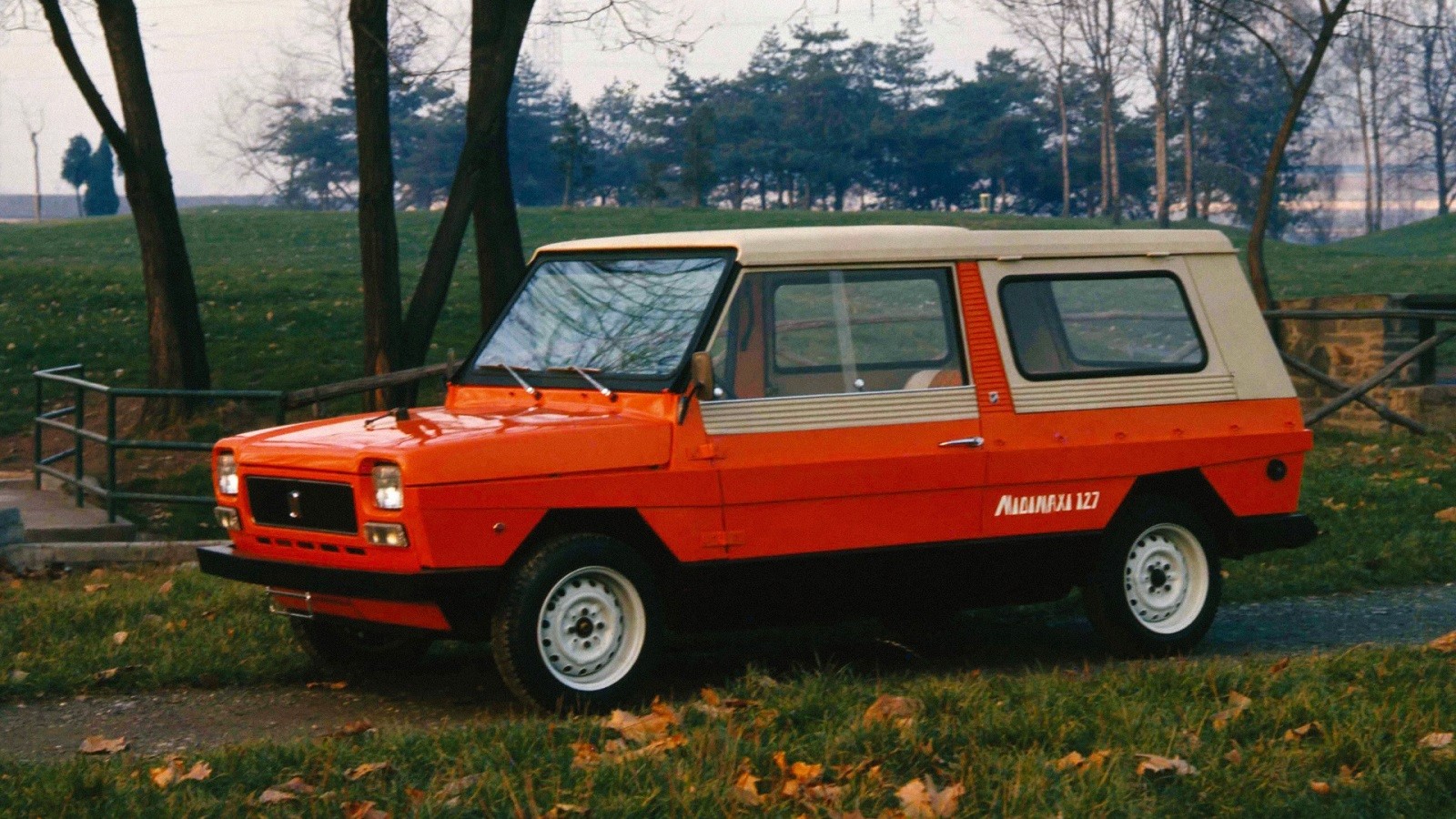 © Fiat
© Fiat -
 © Renault
© Renault -
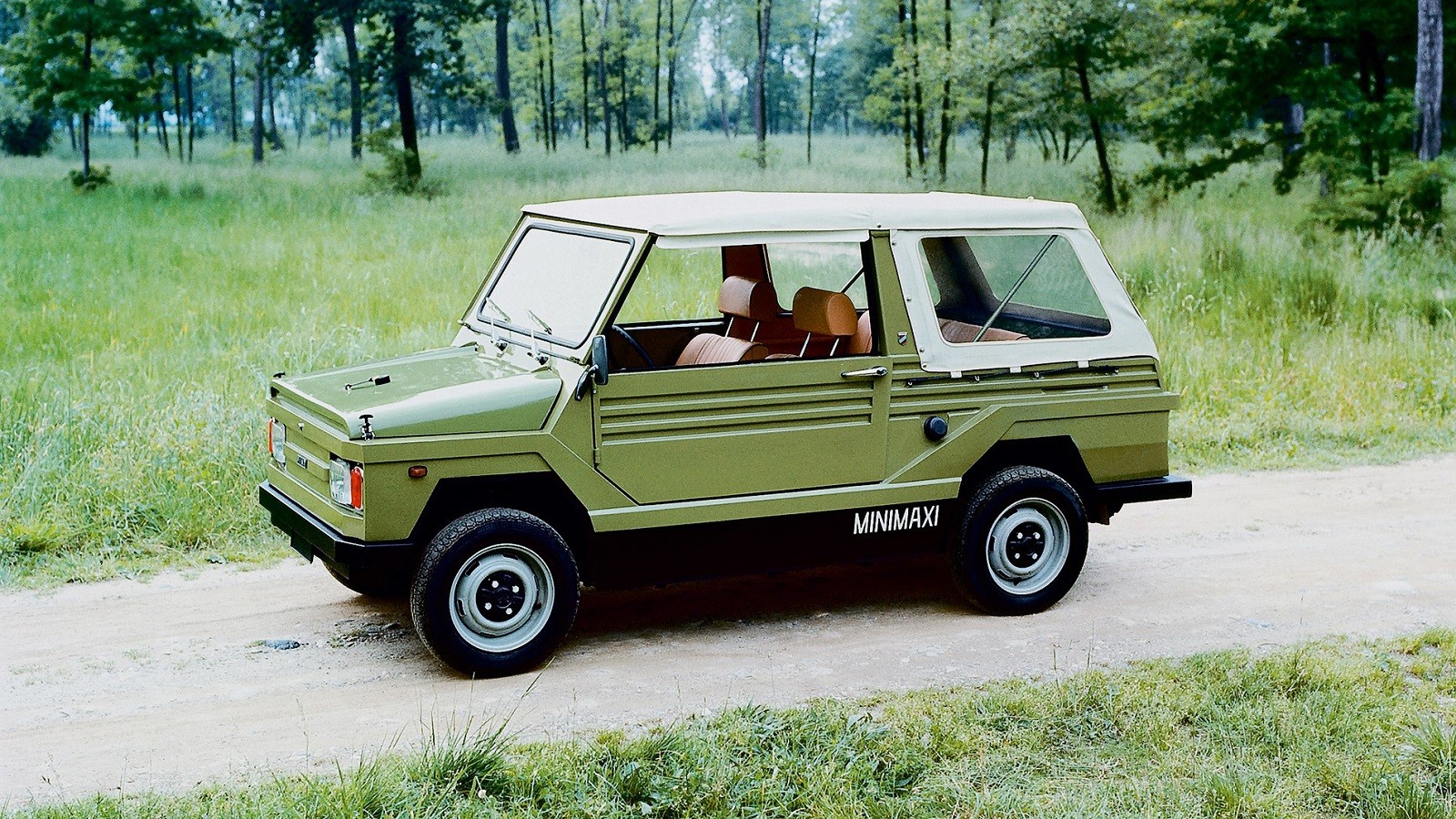 © Fiat
© Fiat -
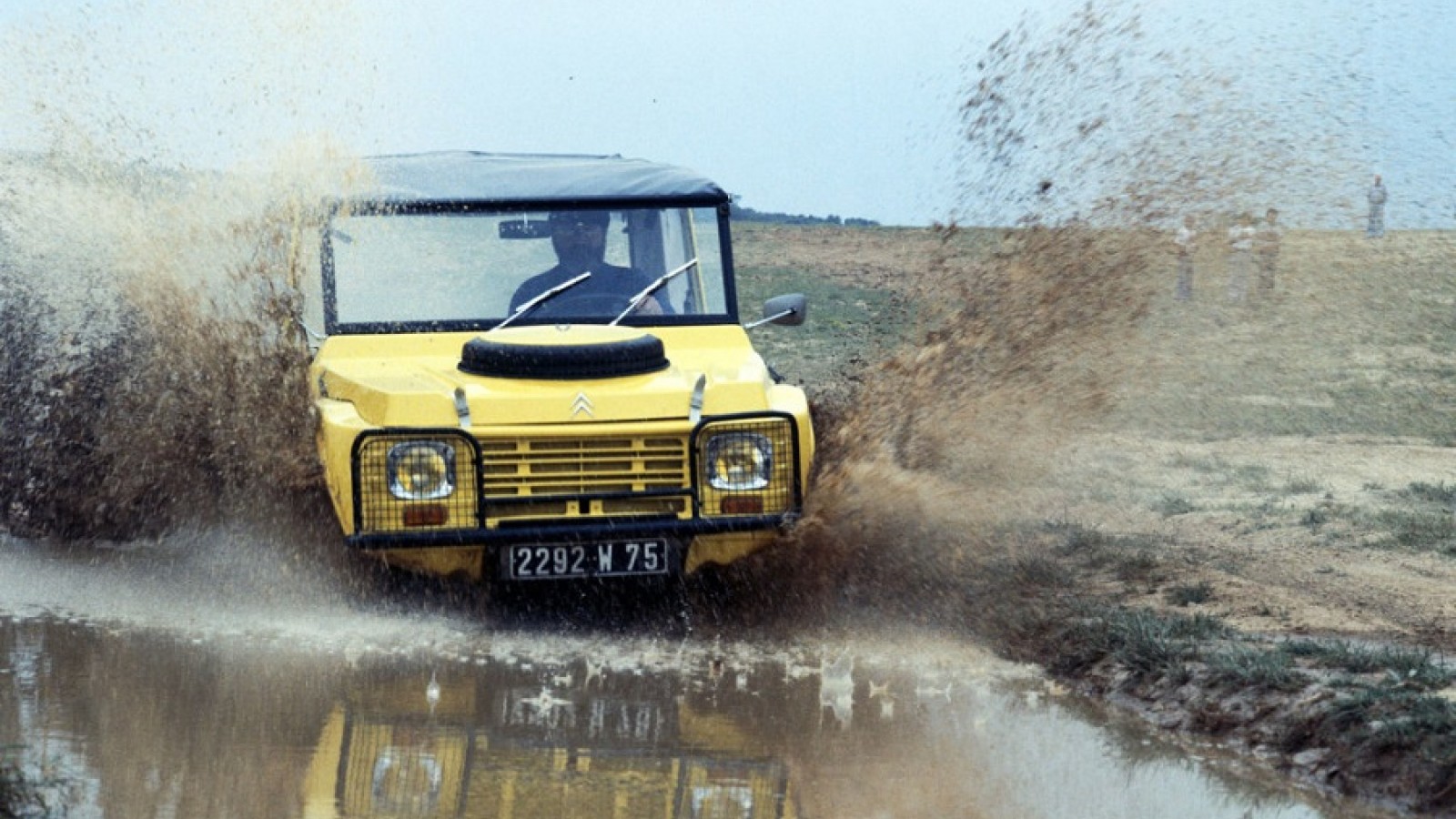 © Citroën
© Citroën -
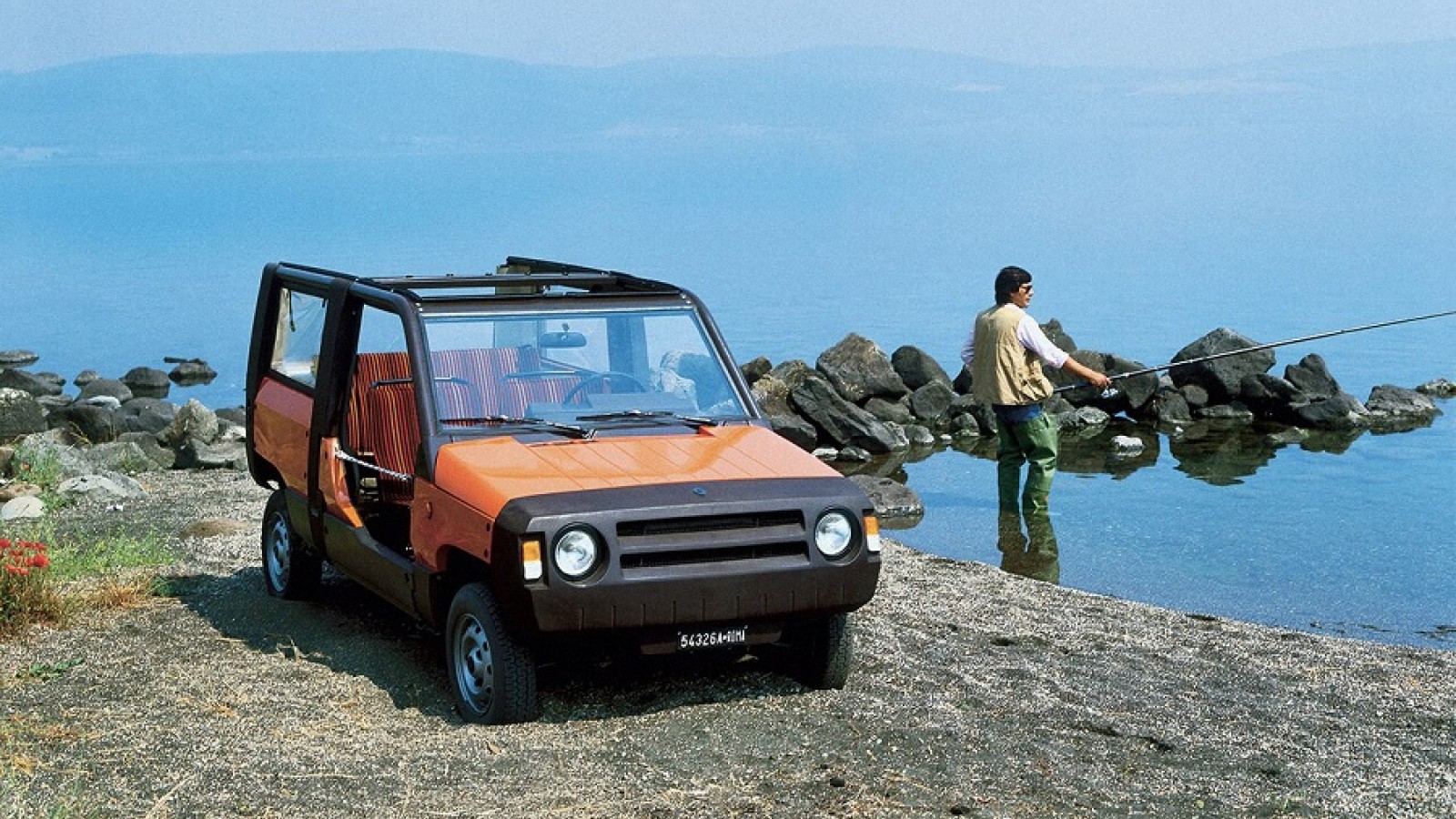 © Renault
© Renault -
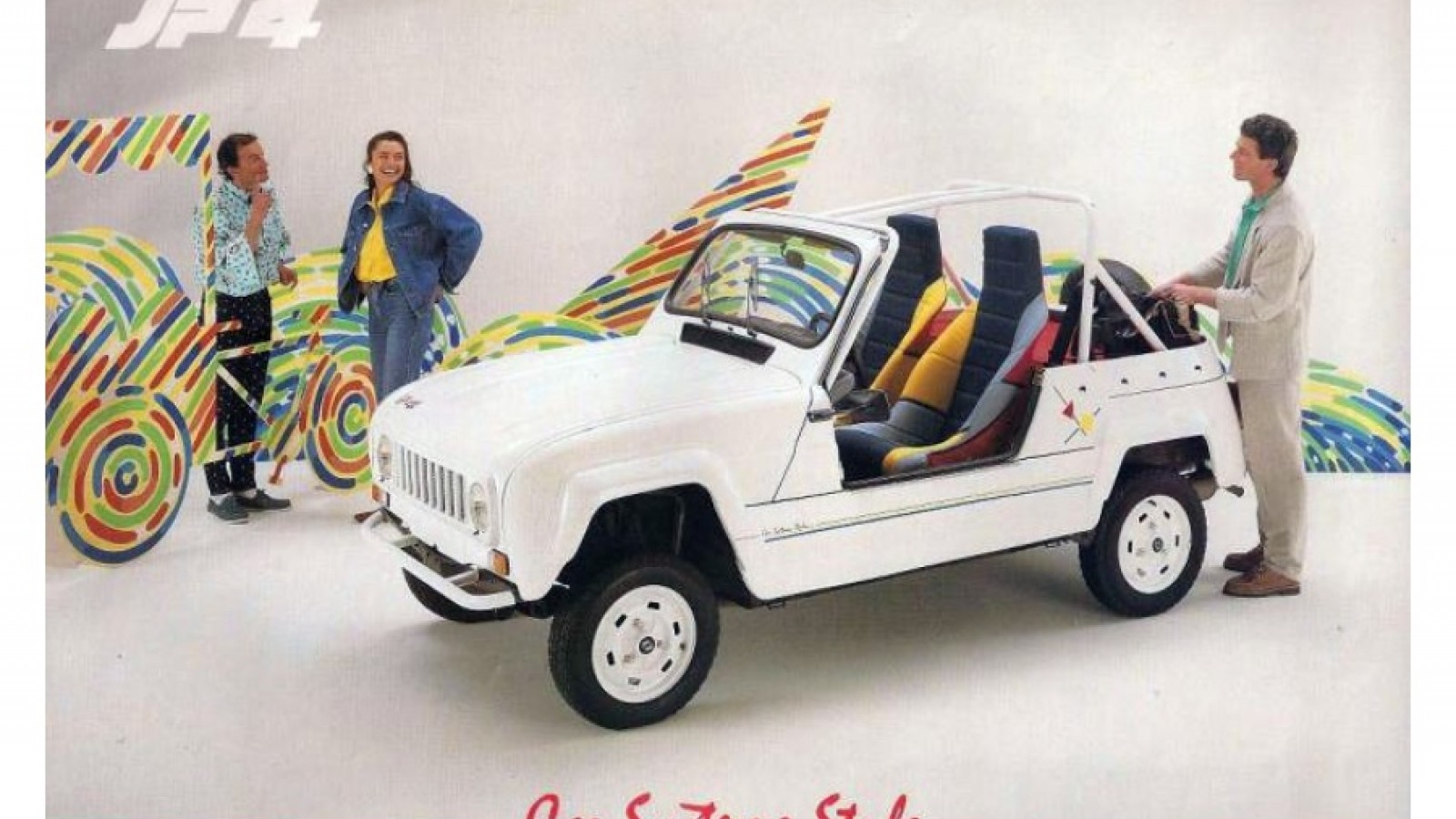 © Renault
© Renault -
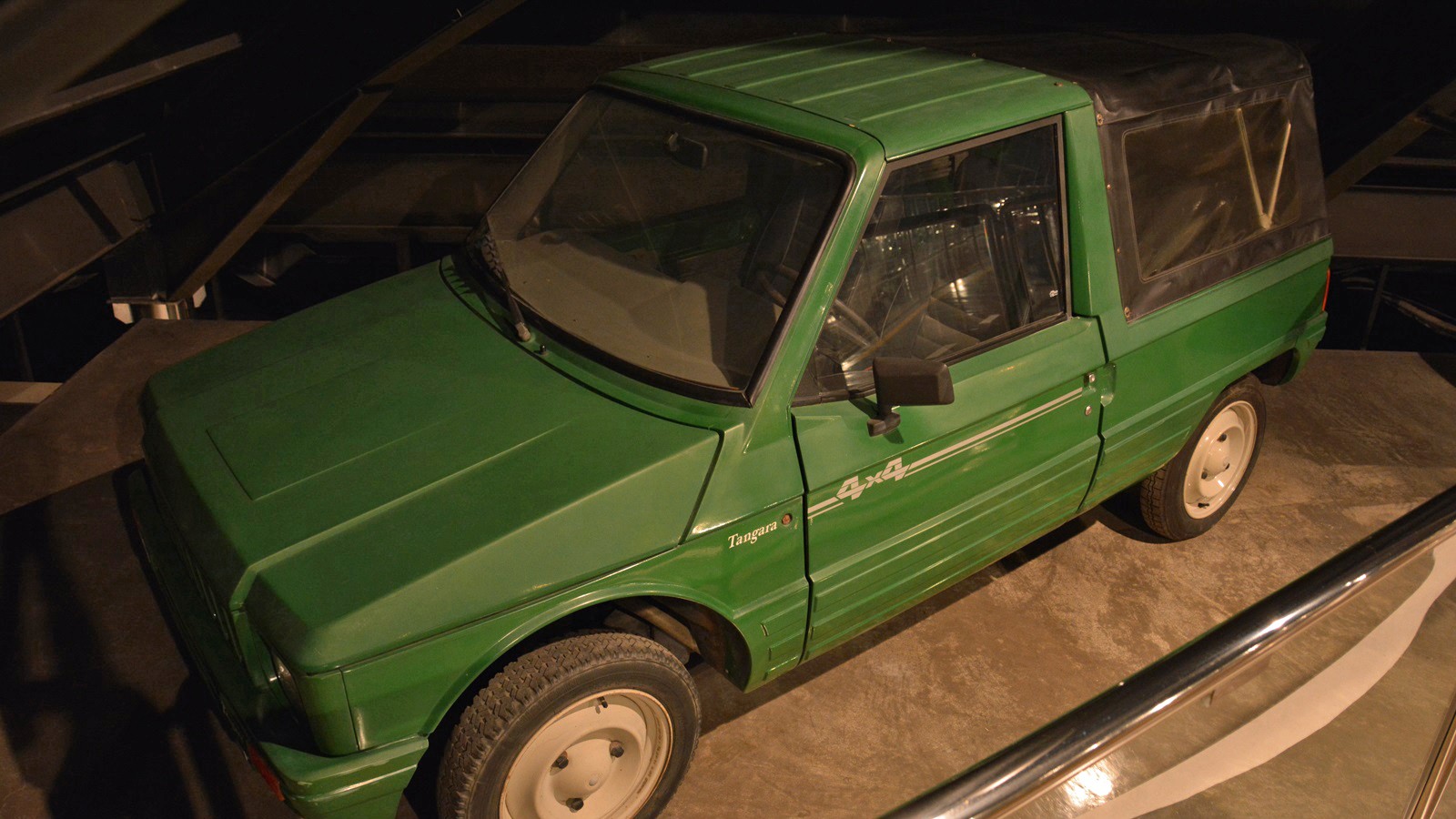 © Ronan Glon
© Ronan Glon -
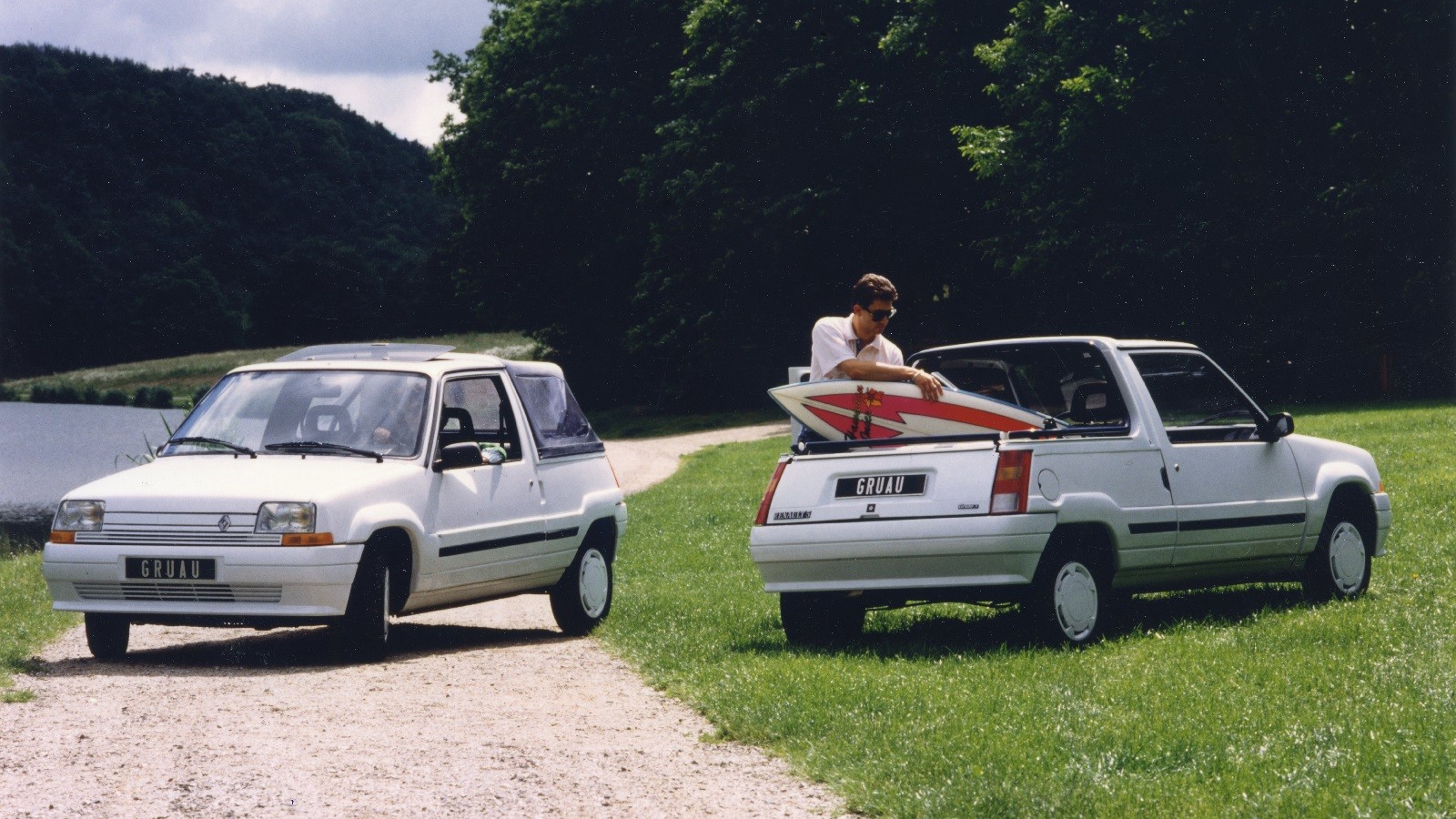 © Renault
© Renault -
 © Renault
© Renault -
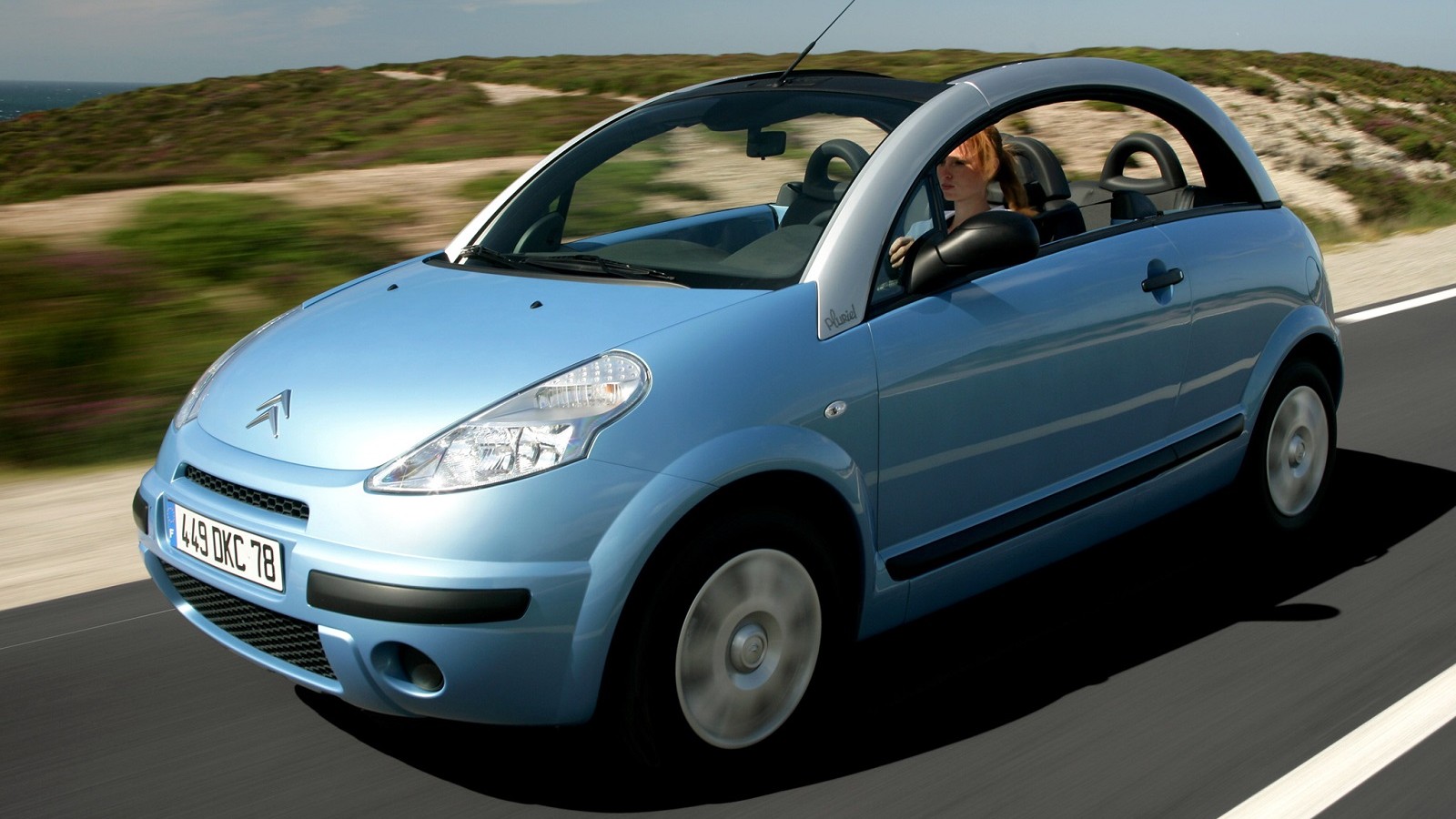 © Citroën
© Citroën -
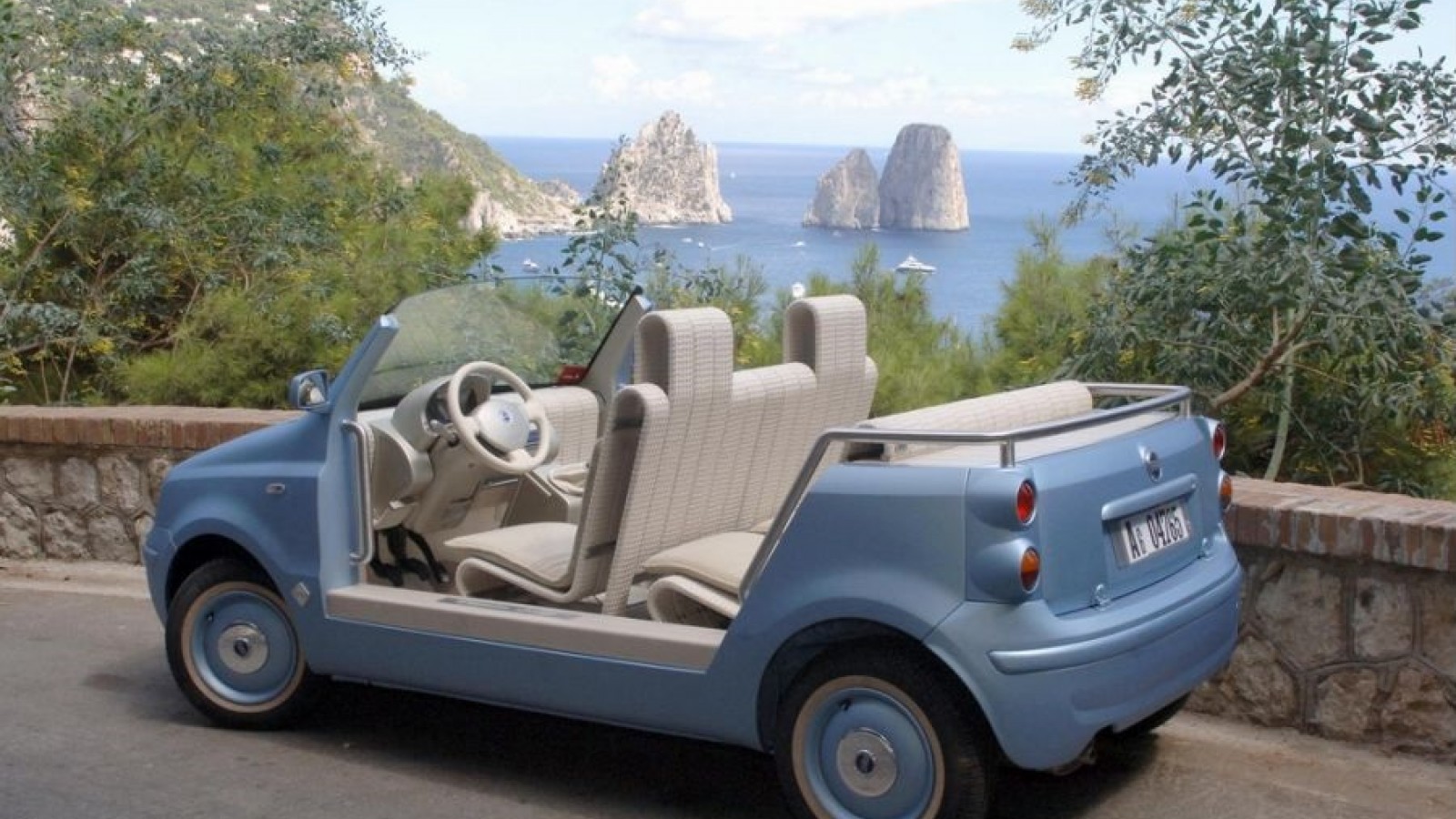 © Fiat
© Fiat
-
Life’s a beach
In the automotive world, few niches are as small and as fascinating as the beach car segment.
Beach cars were normally city-sized econoboxes alchemised into roof-less toys for rich holiday-makers relaxing somewhere warm and sunny. Later, the segment also included versatile models designed to spend their morning at the beach and their afternoon hauling hay. Then, the segment vanished.
While some car companies have tried reviving the body style, it’s extinct in 2021. However classic models remain popular and sought-after.
If you’re heading somewhere hot this summer, or if you’re merely day-dreaming of a weekend at the beach, join us for a look at the classic cars that defined the segment.
-
1. Fiat 500 Jolly (1957)
On paper, Ghia’s mission sounded impossible. It planned to transform the Fiat 500, one of the cheapest vehicles in Italy, into a luxury car and sell it to some of the world’s wealthiest motorists.
It achieved this goal by chopping off the 500’s top, removing its doors and adding a canvas roof shaped like a beach umbrella. Wicker seats were part of the package, too. The end result was an economy car that socialites were more than happy to be seen in, especially because it fitted neatly on a yacht.
While the 500 Jolly wasn’t the first beach car (called spiaggina in Italian), it had a lasting influence on the segment and it’s one of the best-known models. Ghia also made a Jolly version of the bigger 600.
-
2. Renault 4CV Jolly (1960)
Few realise the Renault 4CV also received the Jolly treatment, complete with an umbrella-like top and wicker seats.
Auction house RM Sotheby’s notes 50 units of the 4CV Jolly were built by Ghia in the early 1960s, and only about 20 are known to remain. Many were sold on the American market.
The standard 4CV was bigger and correspondingly more spacious than the Fiat 600, which might explain why it ended up Jolly-ified, but what’s odd is that the conversion came extremely late in the car’s production cycle.
-
3. Meyers Manx (1964)
One of the best-known beach cars is also one of the few successfully sold in the United States.
Artist and boat builder Bruce Meyers (1926-2021) built the first Manx in 1964 as a dune racer using Volkswagen parts, including a Beetle-sourced air-cooled flat-four. It was successful in off-road racing and immensely popular in the sunny parts of the country, like California and Florida.
On a secondary level, the Manx spawned hundreds of imitation models built in America and abroad with varying degrees of authenticity.
-
4. Mini Moke (1964)
Sir Alec Issigonis (1906-1988) originally designed the Mini-based Moke for the British army.
It wasn’t capable enough to serve in the armed forces, its ground clearance was notably too low, so Issigonis recycled his idea into a leisure vehicle positioned at the intersection of city cars and beach buggies.
Small, simple and fun to drive, the Moke was an instant hit in the planet’s warm regions. It benefited from many of the updates made to the standard Mini over the years, and it retired in 1993.
-
5. DAF Kini (1966)
Most beach cars were tailor-made for the mild Mediterranean climate. One notable exception to this rule was the one-of-a-kind DAF Alessio, an open-top four-seater with a futuristic design penned by Michelotti and underpinnings sourced from the 33 (including a flat-twin engine and a continuously variable transmission).
Unveiled in 1966, it was given to the Dutch royal family after Prince Willem Alexander was born in 1967 and renamed Kini.
Instead of exploring the North Sea’s coast, the royal family shipped the Kini to Porto Ercole, a town on Italy’s Tuscan coast, where it spent many holidays.
-
6. Fiat Shellette (1968)
Italian coachbuilder Michelotti positioned the Shellette on the same branch of the Fiat family tree as Ghia’s Jolly-badged variants of the 500 and the 600.
It joined forces with yacht designer Phillip Schell to create an 850-based beach car that offered a more contemporary exterior design, space for four passengers surrounded by a copious amount of wicker, and proven mechanical bits.
Most historians agree that approximately 80 units of the Shellette were built from the late 1960s to the early 1970s.
-
7. Renault 4 Plein Air (1968)
Renault unveiled the 4 Plein Air exactly a day before Citroën presented the Méhari. On paper, these two open-top beach cars were direct rivals.
Renault’s was based on the 4, like the name clearly implied, but it wore a specific body with no doors and a folding soft-top. Citroën’s was an evolution of the 2CV with a model-specific body. One formula worked; the other flopped.
Most historians believe fewer than 600 units of the 4 Plein Air were built between 1968 and 1970. In hindsight, it was too expensive (it cost about 15% more than the Méhari) and too similar to the 4 it was based on.
-
8. Citroën Méhari (1968)
Most beach cars were obscure and built in strictly limited numbers; the Citroën Méhari is one of the few that broke into the mainstream.
Released in 1968, it was essentially a 2CV frame topped with plastic body panels attached to a tubular metal structure.
It’s associated with coastal regions in 2021, and it’s often seen parked next to Mercedes-Benz and Porsche SUVs in front of posh restaurants, but it wasn’t created for the sea or for the rich. It was initially developed as a do-it-all workhorse, which partially explains why thousands of units enlisted in the French army during the model’s long production run.
The final Citroën Méhari left the factory in 1987; around 145,000 were built.
-
9. Volkswagen Thing (1968)
Known as the Type 181 internally, Volkswagen’s Beetle-derived Thing wasn’t initially designed for Californian beaches.
It was created to temporarily replace the DKW Munga in the West German army and released internationally almost as an afterthought.
America was one of its largest markets until safety regulations ended its career in 1975, but production continued in Mexico until 1980.
-
10. Renault Rodeo 4 (1970)
Like the Méhari, the Rodeo wasn’t developed by the car maker whose emblem it wore. It was designed by a French firm called Ateliers de Construction du Livradois (ACL) which was inspired by the Méhari’s success and believed it could do better by starting with Renault underpinnings.
Launched in 1970, the original Rodeo used a frame from a 4 van (later called F4, when a long-wheelbase model joined the range) and an 845cc four-cylinder engine borrowed from the 6. Plastic body panels kept rust at bay.
-
11. Moretti Midimaxi 127 (1971)
Moretti steered clear of the beach car segment in the 1960s, partly because it preferred making coupés and convertibles designed with a clear focus on performance.
It back-pedalled and briefly experimented with a Fiat 500-based model named Minimaxi before turning the 127 into the Midimaxi.
Introduced in 1971, the model was closer in form and in spirit to the Renault Rodeo than to Ghia’s well-known Fiat 500 Jolly in the sense that it was equally at home on the beach and in the countryside.
The Midimaxi received many of the same visual and mechanical updates as the standard 127 during its production run, including different front-end designs. Production ended in 1984.
-
12. Renault Rodeo 6 (1972)
ACL (which changed its name to Teilhol in 1978) originally designed the Rodeo 6 for the French army. Its new-look design hid a frame and a 1.1-litre four-cylinder engine provided by the Renault 6.
It was marketed as a slightly bigger and more powerful alternative to the Rodeo 4 throughout the 1970s, and a 1979 update brought rectangular headlights from the 14 and a 1.3-litre ‘four’ from the 5 GTL.
-
13. Moretti Minimaxi 126 (1973)
Moretti’s first beach car, the Fiat 500-based Minimaxi, is little more than a footnote in the segment’s history. With the 126 on the horizon, the coachbuilder saw an opportunity to make up for lost time by using Fiat’s newest city car as a foundation.
It redesigned the front end by replacing the round lights with square units and it powered the Minimaxi with the 126’s flat-twin engine.
Users could remove the top, unhinge the doors, and fold down the windshield. In hindsight, however, the Minimaxi was overshadowed by the Midimaxi (of two slides earlier). Only a few hundred units were built between 1973 and 1980.
-
14. Citroën Mehari 4x4 (1979)
Citroën released a four-wheel-drive variant of the Méhari in 1979 to counter the Sinpar-converted version of the Renault Rodeo.
Unlike the 2CV Sahara, which used a pair of flat-twin engines, the Méhari 4x4 received a transfer case and a rear axle. It was reasonably capable but users complained it was underpowered and it lacked rigidity in off-road driving conditions.
It cost about twice as much as a front-wheel-drive Méhari and its shockingly high price ended its career – 1213 units were built until 1983.
-
15. Renault Rodeo 5 (1981)
The final evolution of Renault’s entry into the beach car segment arrived in 1981 with more compact dimensions, an updated exterior design and an innovative tubular structure.
Still based on the 4, and still developed by Teilhol, it was powered by a 1.1-litre four-cylinder engine that made it reasonably usable on longer trips. The final Rodeo replaced the aforementioned Rodeo 4 and Rodeo 6 models in the Renault range.
It should have cast a shadow on the Méhari’s career, it was a better car overall, but it remained little more than a rounding error on Renault’s annual sales chart. Production ended in 1986.
-
16. Renault JP4 (1981)
Many found Renault’s inability to capture a significant slice of the beach car market puzzling. Broadly speaking, they assumed the company had the right ingredients but it was following the wrong recipe.
Brittany-based Car Système threw its hat into the ring when it presented the Renault 4-based JP4 in 1981. It chopped nearly eight inches from a donor car’s chassis, cut off the top and removed the doors to create a Jeep-like soft-roader (hence the name), developed purely for leisure.
The end result was far less utilitarian than the Rodeo, and the JP4 received a warm welcome, yet Car Système filed for bankruptcy several times during the ’80s before landing a supply deal with Renault and homologating the model in several European markets.
About 600 units were distributed in Italy, where the JP4 was known as the Renault 4 Frog, and a total of approximately 2500 cars were made until 1990.
-
17. Teilhol Tangara (1987)
Citroën and Renault both exited the beach car segment in the second half of the 1980s. Teilhol firmly believed it was too early to write the body style’s obituary, and its survival heavily depended on the contract to build the Rodeo, so it teamed up with Citroën to make a replacement for the Méhari.
First shown in 1987, the Tangara was built on a 2CV frame and initially fitted with an air-cooled flat-twin, though a 1.1-litre ‘four’ sourced from the AX powered a handful of later models.
Teilhol filed for bankruptcy in 1990 after building around 1100 of the two-cylinder-powered Tangara and fewer than 70 with an AX engine. When it closed, it was ramping up production of a more modern, AX-based model called Theva that could have kept the segment alive through the ’90s. It is generally thought that fewer than 100 examples of the Theva were manufactured.
-
18. Renault Super 5 Belle Ile (1989)
Car Système designed the Super 5 Belle Ile as a replacement for the JP4 and as a way to fill the void left by the Rodeo in the Renault range.
Starting with a Super 5, it replaced the rear part of the roof with a removable soft-top and added a plastic roof panel above the front passengers. The Belle Ile couldn’t go completely topless, the B-pillars were not removable, but this layout made it relatively easy to build.
Renault gave the project its blessing but Car Système collapsed before it began manufacturing the Belle Ile. In an odd twist of fate, French coachbuilder Gruau purchased the firm, its tools and its intellectual property, and began filling Belle Ile orders. Fewer than 700 units were delivered before someone at Gruau sounded the alarm: the Belle Ile wasn’t profitable. The car was cancelled without a successor in 1991.
-
19. Renault Twingo De Plage (1990s)
Coachbuilders created the beach car segment and later passed the baton to car manufacturers. As major firms left the segment one at a time, Vernagallo believed the task of keeping it alive fell back to coachbuilders.
It started with the original Renault Twingo and substantially modified the upper part of the car to turn it into a buggy-like machine with a soft-top and no doors. It reinforced the body and offered buyers a custom-designed interior with marine-grade upholstery as an option.
While specific details are lost to history, at least a handful of Twingo De Plage models were built during the ’90s.
-
20. Citroën C3 Pluriel (2003)
One of the last beach cars made by a major car company is the Citroën C3 Pluriel.
Built from 2003 to 2010, it arrived as an extremely modular evolution of the C3 that could be configured with a closed cabin, with an open roof, or with no roof; folding down the rear bench even turned it into a pick-up.
Some users complained the roof arches were heavy, while others pointed out they couldn’t be easily stored in the car, but the C3 Pluriel is inching towards desirability as it approaches its 20th birthday.
-
21. The beach car in the 21st century
Regulations and a drop in demand joined forces to banish the beach car to the pantheon of automotive history in the 1990s.
Fast forward to 2021, and there’s nothing resembling a Renault Rodeo or a Mini Moke available new from a major car manufacturer.
Citroën briefly tried reviving the beach car segment with the absurdly expensive e-Méhari, Moke International reintroduced the Moke last year, and some Italian firms have built concepts demonstrating what a modern Jolly could look like – one was the Fiat Panda Jolly concept (pictured) presented in 2006.
